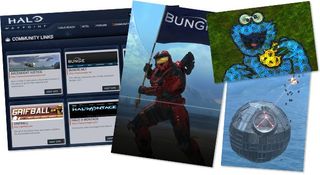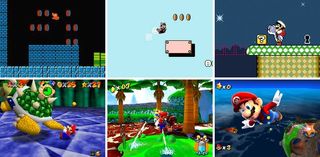Games that every other game should copy
Ripping these off wouldn't be shameless – just smart
Grand Theft Auto
What every game should copy: The protagonist diversity

Minorities are everywhere in gaming. Sidekicks! Comic relief! Wise Morgan Freeman-esque mentor figures! Why, there’s absolutely no role they can’t fill – except for the hero, of course. That’s reserved for the “generic white guy.” When even Japanese RPGs star blue-eyed blondes, and even shooters with no visible protagonist feature pale hands at the bottom of the screen, you know this medium has a diversity problem.
Yet one of the most powerful publishers in the industry, Rockstar, has been aggressively – and progressively – bucking this trend for over half a decade now. Thanks to the Grand Theft Auto series, we’ve played as an African-American, an Eastern-European, two Dominicans, a Chinese immigrant and a Jewish biker. These protagonists’ ethnicities weren’t glossed over details, either, but integral pieces of their games’ identities.
Rockstar’s reward for thinking outside the white bread box? Billions in sales, massive cultural impact and – what truly matters – unique characters that won’t be forgotten for a very long time.
Halo
What every game should copy: The community love

Halo haters gonna hate… but maybe they’re just jealous? Odds are their favorite franchise doesn’t give them anywhere near as much power, influence and freedom as developer Bungie gave to fans of the first five Halo games. The number of ways you’re allowed to customize your experience – or create an entirely new experience – is really remarkable. Especially for a series that is exclusive to the traditionally more restrictive realm of consoles.
Sign up to the GamesRadar+ Newsletter
Weekly digests, tales from the communities you love, and more
Want to invent a multiplayer mode in which the sci-fi soldiers of Halo are transformed into invisible ninja assassins instead? Or zombie hordes? Or hijacking pirates? Or rocket-wielding racecar drivers? That’s all possible with Custom Games. Want to build a map that looks like the Death Star, USS Enterprise or Cookie Monster? Fire up Forge mode. Want to direct your own chapter of Master Chief’s adventures? Surprisingly easy with Saved Films.
Bungie understood that shipping a game should only be the first step – hand the proper tools to your fans and they can continue to expand the experience forever.
Portal / Half-Life
What every game should copy: The release schedule

Have you heard of Valve Time? It’s the explanation for why no game developed by Valve Software will ever release on the date that Valve Software promises – according to the exhausted logic of fans forced to find humor in their continuous disappointment, the company must operate on a timeline different from that of planet Earth’s. Team Fortress 2 is teased as coming “soon” in 1998, so of course doesn’t arrive until late 2007. New episodes of Half-Life 2 are scheduled for every three months, so naturally emerge every few years… if at all.
Don’t care. When the alternative is Activision’s factory model – churn out a new entry year after year after year without fail, even if that means taking a series away from its original creators, flooding all available platforms and ultimately losing the respect of your audience – waiting for Valve doesn’t seem so bad.
No guaranteed release date = guaranteed quality? That promise is enough.
Mario
What every game should copy: The courage to change

In an age of annual sequels featuring modest, incremental improvements, too many play it safe these days. The developers probably don’t deserve much of the blame, as publishers certainly push them to make predictable sequel because those usually lead to predictable profits. If only other game makers had the guts to try something new and big with each release like Nintendo does with Mario.
Perhaps “novel concepts” and “change” don’t mesh with your idea of who Mario is, but when you focus on the main platformer series, ignoring all the spin-offs, you see a history of Mario defying convention. Donkey Kong invented platforming. Super Mario Bros defined the scrolling world despite every other game’s reliance on a single screen. Super Mario Bros 2 (yes, the US version) completely changed the way Mario interacted with enemies. Mario 3 added flight, World added Yoshi, Mario 64 added an entire new dimension. Not only did each of those include a colossal, genre-changing mechanic, it was supported by dozens of other new concepts sprinkled throughout. Even Mario Sunshine, with its tolerable water-spouting backpack proved the devs are always trying something new even if it isn’t met with extreme approval. Most recently the tradition of inventiveness continued with Galaxy, which again completely changed the way Mario interacted with the world around him.

When Nintendo decides to create a new core Mario (normally for a new system), they see it as an opportunity to start over and reimagine Mario all over again. Starting up the newest Mario and seeing him do something he’s never done before is a huge part of his lasting appeal. Maybe everyone won’t succeed as often as Nintendo when they experiment similarly the each new game in a franchise, but it would certainly make things more interesting.
May 20, 2011


18 life lessons taught by old-school videogames
Everything I know, I learned from cartridges and CRT TVs

Recycled characters you see in every BioWare game
A detailed guide to help you recognize BioWare's favorite character archetypes

10 merciless Mario re-imaginings
Fans hold up a dark mirror to gaming's most iconic plumber
Most Popular


